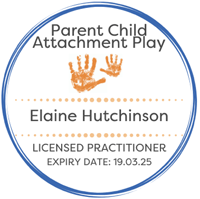Children do not have the inner resources to deal with the big feelings they often experience and need help to process them. Without that help, the feelings become a big, tangled mess inside the child and often spill out as unwanted behaviours which make things incredibly hard for the child and those around them such as aggression, bullying, anxiety, fears and phobias, hyperactivity and other uncontrollable or worrying behaviours.
Storytelling is as old as time; stories connect us to our families and our communities and through them we begin to form a sense of our own identity and our sense of self. Children begin to tell stories about their own play from about the age of two onwards and use these stories to make sense of their world.
Through stories children learn to:
- work through image and metaphor – it is much easier to generalise a difficulty and learn from a story and the advice given to the characters than take direct instruction about your own behaviour
- learn about feelings without having to make themselves vulnerable by talking about their own feelings unless they feel ready and safe to do so
- understand that other people have similar experiences to themselves
- understand the consequences of risk taking without having to experience the risks themselves
Within child therapy, stories are used in three main ways:
- Published stories that are therapeutic or that can lead on to therapeutic work with the child
- Stories written by the therapist or together with the child that work in a metaphor to support the child with a problem they are having
- Narrative storytelling – stories are told in sessions and can be child-led, therapist-led or mutual stories
Creating a story for, or with, a child is the most beneficial way. It can be tailored specifically to the child’s interests and situation as well as their own personality and therapeutic needs and this allows the child to gain insights from the story which will help them in turn solve their own issues.
There are lots of stories for children that are beautifully written and illustrated with a great point to them or some key learning, but not all stories are therapeutic stories.
Generally, therapeutic stories speak to the child about an emotional issue they may be having in such a way that the child can see, hear, feel and know that they have been understood at a deep level. They will often explore a coping strategy the child is using that isn’t working or making them feel ‘stuck’ and explore alternative possibilities and creative solutions for overcoming the issue they are struggling with. Not all those solutions have to be available to the child right that minute but can be stored as future resources for when they face the issue again.

Therapeutic stories also need to show that these new ways of thinking need some practicing to get right, so the character doesn’t succeed first time. This is because most children struggle with resilience and in real life, often new skills don’t succeed perfectly first time and we all often need a do-over (or two, or three…) to embed the skill. As well as skill rehearsal, therapeutic stories give a child the chance to see what happens if alternative courses of actions are taken (successful or unsuccessful) and think about how this applies to their life and situation.
If you are interested in reading more, both Margot Sutherland and Ann Cattenach write easily accessible books that can give you more help and advice.
If you have any questions, please feel free to drop me an email:






